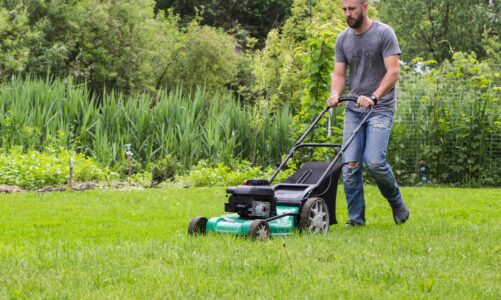Spring is finally just around the corner. There’s nothing quite like weeks of snowy weather to make the first sights and sounds of spring more beautiful.
If you’re anything like me, you’ve been dreaming of getting your fingers dirty in your garden. While the grounds warms up, here are a few simple ways to prepare your garden beds for spring. For more, you can check AllGreen.
Prepare Garden Beds for Spring
Plan your plots
You can probably have a beautiful, successful garden by just plopping seeds or plants in the ground and tending them as they grow. But having a plan, especially if you have smaller beds like mine, helps use the space most efficiently and beautifully.
Plus, proper planning helps ensure good crop rotation. Certain types of soil diseases tend to attack plants in the same family. Planning your garden beds so that you don’t plant members from the same family in the same spot year after year is one of the simplest organic ways to cut down on plant diseases.
A garden plan doesn’t need to be elaborate. I just ask myself a few questions and scribble ideas down on a piece of paper:
- Of the millions of things I’d like to plant, what are my top choices?
- How many seeds/plants of each do I have room for/will we actually use?
- How much space will they take as they grow?
- Based on where I planted things last year, how should I rotate crops?
- Where should I put my plants to best make use of companion planting? (See this simple guide for ideas or check out Carrots Love Tomatoes)
- Finally, as my friend Aneysa encouraged me, how can I make my garden beautiful, not just practical?
My very favorite gardening book, One Magic Square, has dozens of excellent garden plot ideas that make planning easy and ever so fun.
Gather your supplies
Seeds, soil, and toolsIf you’ve been pouring over seed catalogs all winter, but haven’t made a purchase yet, now is a good time to order! I personally love Baker Creek Heirloom Seeds or just wandering down the seed aisle at Lowe’s (though it taxes my self-will not to purchase all fifty varieties of spinach.) Having the seeds before the spring planting rush begins helps make sure you don’t miss out on a perfect planting afternoon.
Check your garden tools. If your five-year-old just happened to forget to put the spades away and they rusted under a pile of snow, add spades to your shopping list.
If you want to grow tall plants like tomatoes and cucumbers, make or invest in extra tall cages or trellises right from the beginning. Otherwise, chaos might happen when your tomatoes outgrow their cute five-foot cages and tumble over the rest of the garden in a tangle. Trust me, I know.
Invest in good soil
Good soil makes a world of difference in a garden. If you prepped the soil last winter with added compost and a thick layer of wood mulch, you should be ready to go. Otherwise, dig in compost and any other soil additives. Covering the plot with a thick layer of wood mulch really helps cut down on weeding and watering.
Many cities offer free or cheap wood chips, and some tree service companies are willing to drop off a truckload of wood chips for free. Just call around! Try to avoid black walnut compost though, since black walnut trees inhibit the growth of other plants.
(If you happen to have backyard chickens, let them roam through the beds and peck out any bugs before getting to the fun part…)
Plant early crops
A gardening expert from church (who has gardens so amazing that they send me into garden paradise) told me you can practically sprinkle spinach seeds on top of snow. Once the snow melts, the spinach will grow.
Other early spring crops include kale, lettuce, peas, broccoli, cauliflower, carrots, many herbs, and more.
If you plan to grow your own seedlings, they should get started now too. Since I don’t have room in my little garden plots for dozens of tomato plants, I decided to skip growing seedlings this year.
Get your garden ready for spring
While the ground begins to thaw, get your gardens ready by planning your plots, gathering supplies, prepping the soil, and planting spring crops.




